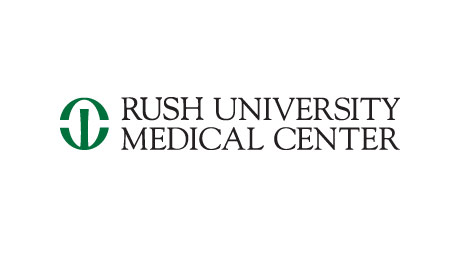Combination Chemotherapy With or Without Rituximab in Treating Participants With Stage III-IV Classic Hodgkin Lymphoma
| Status: | Completed |
|---|---|
| Conditions: | Lymphoma |
| Therapuetic Areas: | Oncology |
| Healthy: | No |
| Age Range: | 17 - Any |
| Updated: | 11/21/2018 |
| Start Date: | March 19, 2008 |
| End Date: | September 5, 2018 |
A Randomized Phase II Study of Rituximab With ABVD Versus Standard ABVD for Patients With Advanced-Stage Classical Hodgkin Lymphoma With Poor Risk Features (IPS Score > 2)
This phase II trial studies how well combination chemotherapy with or without rituximab works
in treating participants with stage III-IV classic Hodgkin lymphoma. Monoclonal antibodies,
such as rituximab, may interfere with the ability of tumor cells to grow and spread. Drugs
used in chemotherapy, such as doxorubicin hydrochloride, bleomycin, vinblastine, and
dacarbazine, work in different ways to stop the growth of tumor cells, either by killing the
cells, by stopping them from dividing, or by stopping them from spreading. Giving rituximab
with combination chemotherapy may work better in treating participants with classic Hodgkin
lymphoma.
in treating participants with stage III-IV classic Hodgkin lymphoma. Monoclonal antibodies,
such as rituximab, may interfere with the ability of tumor cells to grow and spread. Drugs
used in chemotherapy, such as doxorubicin hydrochloride, bleomycin, vinblastine, and
dacarbazine, work in different ways to stop the growth of tumor cells, either by killing the
cells, by stopping them from dividing, or by stopping them from spreading. Giving rituximab
with combination chemotherapy may work better in treating participants with classic Hodgkin
lymphoma.
PRIMARY OBJECTIVES:
I. To evaluate the event free survival (EFS) following therapy with rituximab plus adriamycin
(doxorubicin hydrochloride), bleomycin, vinblastine, and dacarbazine (ABVD) or standard ABVD
in patients with newly diagnosed classical Hodgkin lymphoma who have poor prognosis defined
as International prognostic score (IPS) of > 2.
SECONDARY OBJECTIVES:
I. To compare the effect of the two treatment arms on positron emission tomography (PET) scan
results after 2 cycles of therapy.
II. To compare the effect of the two treatment arms on the level of circulating malignant
Hodgkin stem cells.
OUTLINE: Participants are randomized to 1 of 2 arms.
ARM A: Participants receive rituximab intravenously (IV) over 7 hours on days 1, 8, 15, and
22 of course 1 and on days 1 and 8 of course 2. Participants also receive doxorubicin
hydrochloride, bleomycin, vinblastine, and dacarbazine IV over 1 hour on days 1 and 15.
Treatment with ABVD repeats every 4 weeks for up to 6 courses in the absence of disease
progression or unacceptable toxicity.
ARM B: Participants receive doxorubicin hydrochloride, bleomycin, vinblastine, and
dacarbazine as in Arm A.
After completion of study treatment, participants are followed up every 3 months for the
first year, every 4 months for the second year, every 6 months for years 3-5, and then
annually thereafter.
I. To evaluate the event free survival (EFS) following therapy with rituximab plus adriamycin
(doxorubicin hydrochloride), bleomycin, vinblastine, and dacarbazine (ABVD) or standard ABVD
in patients with newly diagnosed classical Hodgkin lymphoma who have poor prognosis defined
as International prognostic score (IPS) of > 2.
SECONDARY OBJECTIVES:
I. To compare the effect of the two treatment arms on positron emission tomography (PET) scan
results after 2 cycles of therapy.
II. To compare the effect of the two treatment arms on the level of circulating malignant
Hodgkin stem cells.
OUTLINE: Participants are randomized to 1 of 2 arms.
ARM A: Participants receive rituximab intravenously (IV) over 7 hours on days 1, 8, 15, and
22 of course 1 and on days 1 and 8 of course 2. Participants also receive doxorubicin
hydrochloride, bleomycin, vinblastine, and dacarbazine IV over 1 hour on days 1 and 15.
Treatment with ABVD repeats every 4 weeks for up to 6 courses in the absence of disease
progression or unacceptable toxicity.
ARM B: Participants receive doxorubicin hydrochloride, bleomycin, vinblastine, and
dacarbazine as in Arm A.
After completion of study treatment, participants are followed up every 3 months for the
first year, every 4 months for the second year, every 6 months for years 3-5, and then
annually thereafter.
Inclusion Criteria:
- Previously untreated patient with classical Hodgkin's lymphoma patients with stage III
and IV
- International Prognostic Score of > 2 (patient must have > 2 of the following risk
features: Male, >= 45 years of age, stage IV, albumin < 4, white blood cell count
[WBC] >= 15, lymphocytes < 8% or < 600, hemoglobin [Hgb] < 10.5)
- Must sign a consent form
- Absolute neutrophil count (ANC) >= 1,500/microL
- Platelet > 100,000/microL
- Left ventricular ejection fraction (LVEF) >= 50% by multigated acquisition (MUGA) scan
or echocardiogram
- Serum creatinine < 2 mg/dl
- Serum bilirubin < 2 mg/dl
- Aspartate aminotransferase (AST) or alanine aminotransferase (ALT) < 2 x upper limit
of normal (ULN)
- Bi-dimensionally measurable disease
Exclusion Criteria:
- Lymphocyte predominant Hodgkin's lymphoma
- Known human immunodeficiency virus (HIV) infection
- Pregnant women and women of child bearing age who are not practicing adequate
contraception
- Prior chemotherapy or radiation therapy
- Severe pulmonary disease as judged by the principal investigator (PI) including
chronic obstructive pulmonary disease (COPD) and asthma
- Active infection requiring treatment with intravenous therapy
- Presence of central nervous system (CNS) lymphoma
- Concomitant malignancies or previous malignancies within the last 5 years (exception
made for adequately treated basal or squamous cell carcinoma of the skin or carcinoma
in situ of cervix)
- Active hepatitis B or C infection
We found this trial at
4
sites
Click here to add this to my saved trials
Rush University Medical Center Rush University Medical Center encompasses a 664-bed hospital serving adults and...
Click here to add this to my saved trials
Click here to add this to my saved trials
Memorial Sloan Kettering Cancer Center Memorial Sloan Kettering Cancer Center — the world's oldest and...
Click here to add this to my saved trials

